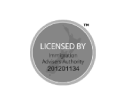Introduction
Planning a move to Australia can feel like navigating a complex maze, especially when you’re aiming for permanent residency. The Australian skilled migration points system is the key to unlocking this opportunity, but it can seem daunting at first glance. This system awards points based on various factors like age, education, work experience, and English proficiency. Think of it as a competitive ranking system – the higher your score, the better your chances of receiving an invitation to apply for a permanent residency visa.
This article simplifies the process into seven manageable steps, providing clarity and strategic insights. Whether you’re a seasoned professional looking for new horizons or planning for your family’s future, understanding this system is crucial. Let’s break down how you can maximize your points and strategically plan your journey to becoming an Australian permanent resident.
1. Understand the Basics of the Points Test
The points test applies to several skilled migration visas, including the popular Subclass 189 (Skilled Independent) visa, the Subclass 190 (Skilled Nominated) visa, and the Subclass 491 (Skilled Work Regional (Provisional) visa. Each visa has specific requirements, but the points test is a common factor.
To be eligible, you generally need to score at least 65 points. However, keep in mind that this is just the minimum. In reality, with the competitive nature of skilled migration, aiming significantly higher than 65 points is advisable to increase your chances of receiving an invitation. Recent trends show that many occupations require scores well above the minimum.
2. Age: Strategic Considerations for Maximum Points
Age is a critical factor, and understanding how it affects your score is essential. The “sweet spot” is generally between 25 and 32 years old, where you can score the maximum 30 points.
Here’s the age breakdown:
- 18-24 years: 25 points
- 25-32 years: 30 points
- 33-39 years: 25 points
- 40-44 years: 15 points
- 45 years or over: 0 points
Strategic Insight: If you’re nearing the upper age bracket (39-44), prioritizing other areas to maximize your points becomes even more crucial. For example, investing in further education or pursuing professional year programs can offset the lower age score.
3. English Language Proficiency: Invest in Excellence
Demonstrating strong English language skills is not just about meeting the minimum requirement; it’s about maximizing your points. The International English Language Testing System (IELTS) is the most common test, but other options like TOEFL iBT are also accepted.
Here’s how the points are awarded based on IELTS scores:
- Competent English (IELTS 6 in each band): 0 points
- Proficient English (IELTS 7 in each band): 10 points
- Superior English (IELTS 8 in each band): 20 points
Strategic Insight: Aim for “Superior English.” While achieving IELTS 8 in each band requires dedication, the 20 points can significantly boost your overall score. Even if you’re a native English speaker, preparing for the IELTS and achieving a high score is a worthwhile investment.
4. Work Experience: Document and Maximize Your Expertise
Your work experience, both in and outside Australia, contributes significantly to your points score. It’s vital to accurately document your experience and ensure it aligns with the Australian and New Zealand Standard Classification of Occupations (ANZSCO).
- Less than 3 years: 0 points
- 3-5 years: 5 points
- 5-8 years: 10 points
- 8 years or more: 15 points
Strategic Insight: If you have a combination of overseas and Australian work experience, the points can be additive. Focus on gaining experience in your nominated occupation, as experience in closely related occupations may also be considered, but generally at a lower weight. Ensure all work experience is verifiable with employment letters and payslips.
5. Education: A Path to Higher Points
Your educational qualifications play a crucial role in your points score.
- A Doctorate from an Australian educational institution or a Doctorate from another educational institution, that is of a recognised standard: 20 points
- A Bachelor degree from an Australian educational institution or a Bachelor degree from another educational institution, that is of a recognised standard: 15 points
- A diploma or trade qualification completed in Australia: 10 points.
Strategic Insight: If you have a foreign qualification, ensure it’s assessed as equivalent to an Australian qualification by the relevant assessing authority. Consider further education, such as a Master’s or Ph.D., if feasible, to significantly increase your points.
6. Partner Skills: A Valuable Asset
If you have a partner who is also skilled, their qualifications and skills can contribute to your points score, provided they meet certain requirements. Your partner needs to be under 45 years old, have competent English, and possess a positive skills assessment in an occupation on the relevant skilled occupation list.
- Skilled partner: 5 points
Strategic Insight: Even if your partner isn’t the primary applicant, investing in their skills assessment and English language proficiency can add valuable points to your overall score. Encourage their participation in the migration process to maximize your combined potential.
7. State Nomination and Other Factors: Leverage Every Advantage
State nomination (Subclass 190) and regional visas (Subclass 491) offer additional points and can be a strategic pathway to permanent residency.
- Nomination by a State or Territory government (190 visa): 5 points
- Nomination by a State or Territory government or sponsorship by a family member residing in a designated regional area (491 visa): 15 points
Other factors that can contribute to your points include:
- Australian study requirement: 5 points
- Professional Year in Australia: 5 points
- Accredited community language (e.g., NAATI CCL test): 5 points
Strategic Insight: Research the specific requirements and occupation lists for each state or territory. Some states have higher demand for certain occupations and may offer nomination even with a slightly lower points score. Consider pursuing a Professional Year program if you’re eligible, as it not only adds points but also enhances your employability. If you are fluent in another language, investigate NAATI CCL testing for an easy 5 points.
Conclusion
Navigating Australia’s PR points system requires a strategic and informed approach. By understanding each component of the points test and actively working to maximize your score, you significantly increase your chances of a successful migration. Remember to:
- Accurately assess your current points score.
- Identify areas where you can improve your score.
- Stay updated on the latest immigration policies and trends.
- Consider seeking professional advice from a registered migration agent. The Migration Institute of Australia offers a directory of registered migration agents.
With careful planning and diligent execution, you can transform your dream of living and working in Australia into a reality. Good luck!










